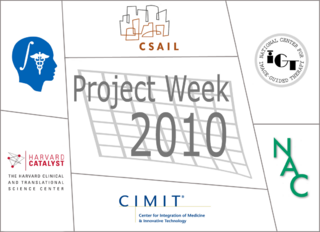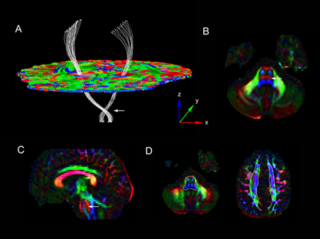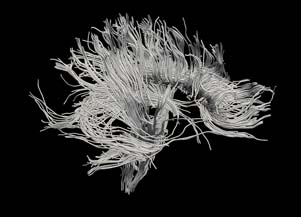Difference between revisions of "2010 Summer Project Week Diffusion"
| (3 intermediate revisions by the same user not shown) | |||
| Line 1: | Line 1: | ||
| + | __NOTOC__ | ||
{| | {| | ||
|[[Image:PW-MIT2010.png|thumb|320px|[[2010_Summer_Project_Week#Projects|Project Week Main Page]] ]] | |[[Image:PW-MIT2010.png|thumb|320px|[[2010_Summer_Project_Week#Projects|Project Week Main Page]] ]] | ||
| Line 5: | Line 6: | ||
|[[Image:FMModuleScreenshot.png|thumb|320px|Screenshot of Slicer Module for Fluid Mechanics Tractography.]] | |[[Image:FMModuleScreenshot.png|thumb|320px|Screenshot of Slicer Module for Fluid Mechanics Tractography.]] | ||
|} | |} | ||
| − | |||
| − | |||
| − | |||
| − | |||
===Key Investigators=== | ===Key Investigators=== | ||
| Line 32: | Line 29: | ||
We have developed and initially validated a DTI tractography method based on Navier-Stokes fluid mechanics. See the papers listed in the reference section for complete details on the method. Our approach for this project week will focus on the following: | We have developed and initially validated a DTI tractography method based on Navier-Stokes fluid mechanics. See the papers listed in the reference section for complete details on the method. Our approach for this project week will focus on the following: | ||
| − | * Building the our current CL Slicer module into | + | * Building the our current CL Slicer module into Slicer 3. Our method is currently integrated as a CL Slicer module in a custom build of Slicer 3. The module has the following functionalities: |
| − | |||
**computation of fluid velocity vector field volume | **computation of fluid velocity vector field volume | ||
**reconstruction of tracts based on the above fluid velocity volume | **reconstruction of tracts based on the above fluid velocity volume | ||
** Optimizing initial coding of method in ITK (better use of multithreading) | ** Optimizing initial coding of method in ITK (better use of multithreading) | ||
| − | |||
| − | |||
| − | |||
| − | |||
* Working with the interested groups in analyzing control and white matter pathology data. Specifically, we have seen promising results when looking at the flow perturbation around white matter lesions seen in multiple sclerosis or stroke that may suggest a novel method for automatic lesion detection in DTI. | * Working with the interested groups in analyzing control and white matter pathology data. Specifically, we have seen promising results when looking at the flow perturbation around white matter lesions seen in multiple sclerosis or stroke that may suggest a novel method for automatic lesion detection in DTI. | ||
</div> | </div> | ||
| Line 47: | Line 39: | ||
<h1>Progress</h1> | <h1>Progress</h1> | ||
| − | * | + | *Code for module is available for download and compilation via the NAMIC Sandbox (in directory "FluidMechanicsTractography"). |
| − | + | *Code has successfully been built into an experimental branch of Slicer - Slicer3.6-hagemanFMTractography. Download and build using getbuildtest.tcl to get module. | |
| − | * | + | |
| − | |||
| − | |||
</div> | </div> | ||
Latest revision as of 18:14, 23 June 2010
Home < 2010 Summer Project Week DiffusionKey Investigators
- UCLA: Nathan Hageman
- UCLA: Arthur Toga, Ph.D
- Isomics: Steve Pieper and Alex Yarmarkovich
Objective
Computational fluid dynamics is a rich field and its application to the analysis of diffusion tensor imaging (DTI) datasets has yielded possible applications to tractography, image registration, and white matter pathology. We are developing several useful and novel diffusion tensor imaging (DTI) analysis algorithms modeled on the principles of fluid mechanics for inclusion within the NA-MIC framework. The goal of this project is to develop these methods, make them compatible with the NA-MIC ITK-based software infrastructure (i.e. Slicer), and promote their dissemination to the scientific community.
See our Project Page for more information.
Approach, Plan
We have developed and initially validated a DTI tractography method based on Navier-Stokes fluid mechanics. See the papers listed in the reference section for complete details on the method. Our approach for this project week will focus on the following:
- Building the our current CL Slicer module into Slicer 3. Our method is currently integrated as a CL Slicer module in a custom build of Slicer 3. The module has the following functionalities:
- computation of fluid velocity vector field volume
- reconstruction of tracts based on the above fluid velocity volume
- Optimizing initial coding of method in ITK (better use of multithreading)
- Working with the interested groups in analyzing control and white matter pathology data. Specifically, we have seen promising results when looking at the flow perturbation around white matter lesions seen in multiple sclerosis or stroke that may suggest a novel method for automatic lesion detection in DTI.
Progress
- Code for module is available for download and compilation via the NAMIC Sandbox (in directory "FluidMechanicsTractography").
- Code has successfully been built into an experimental branch of Slicer - Slicer3.6-hagemanFMTractography. Download and build using getbuildtest.tcl to get module.
References
- Hageman NS, Shattuck DW, Narr K, Toga AW (2006). A diffusion tensor imaging tractography method based on Navier-Stokes fluid mechanics. Proceedings of the 2006 IEEE International Symposium on Biomedical Imaging: From Nano to Macro (ISBI 2006), Arlington, VA, USA, 6-9 April 2006. p. 798-801
- Hageman NS, Toga AW, Narr K, Shattuck DW (2009). A diffusion tensor imaging tractography algorithm based on Navier-Stokes fluid mechanics. IEEE Trans. in Medicial Imaging, 28(3): 348-360.



